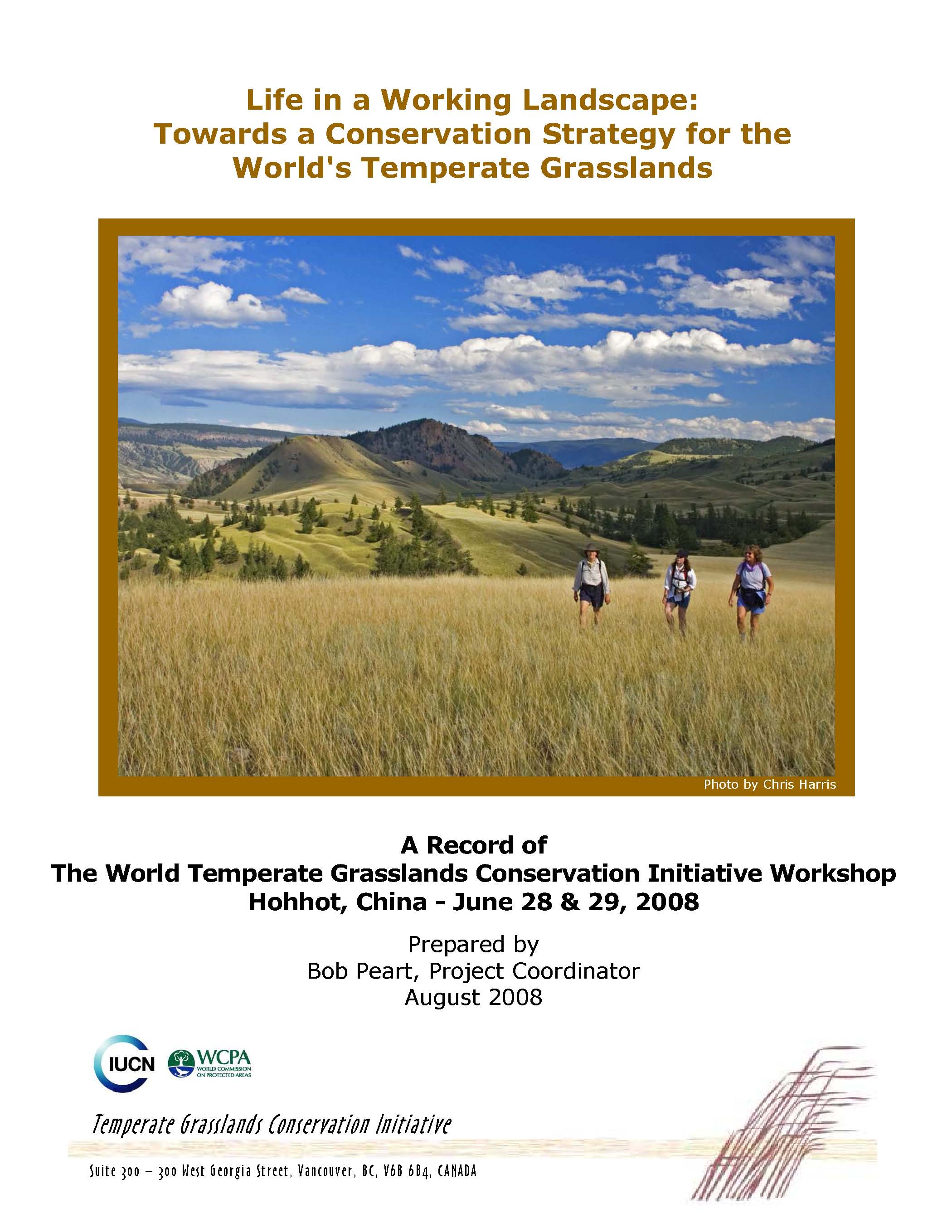Life in a working landscape: Towards a conservation strategy for the World's Temperate Grasslands
A Record ofThe World Temperate Grasslands Conservation Initiative Workshop
Hohhot, China - June 28 & 29, 2008
Prepared by Bob Peart, Project Coordinator

Photo: Chris Harris
Temperate grasslands occupy ~8% of the earth's terrestrial surface and are now considered the most altered and beleaguered ecosystem on the planet, with only 5.5% protected. Temperate grasslands used to be home to some of the greatest assemblages of wildlife on earth.
In 2005, the J.M. Kaplan Fund invited expressions of interest designed to enhance international communication and cooperation for the protection and conservation of the world's temperate grasslands. The Grasslands Protected Area Task Force of the World Commission on Protected Areas (WCPA) submitted a proposal and was awarded a grant - as a result the Temperate Grasslands Conservation Initiative (TGCI) was born.
The TGCI scheduled a workshop on June 28-29, 2008 in Hohhot, China, in conjunction with the joint International Grasslands Congress and the International Rangelands Congress, and invited 35 grassland specialists to attend, to develop an action plan with the following purpose and outcomes. Purpose: To reverse the trend of biodiversity loss and degradation of the temperate grassland biome by promoting both the designation and sustainable management of representative protected areas, and the widespread use of sustainable management practices beyond protected area boundaries, with the goal of at least doubling the current level of protection by 2014.
Outcomes: To establish a global strategy and to inspire the value of regional-specific action plans world wide throughout 2008-2009, by:
- Producing a communications document that describes the global role, values and purpose of the temperate grasslands initiative.
- Facilitating the establishment of regional action plans for East Asia and South America.
- Promoting sustainable use and management that preserves the many valuable ecological services delivered by indigenous temperate grasslands
- Developing a mechanism for improving international communications and cooperation related to temperate grasslands.
- Promoting the benefits of transboundary protected area networks.
To provide information on the status of temperate grasslands, 15 participants completed a regional template document that was brought together into a Compendium. This compendium provides a 'world perspective' and will be helpful in both a global strategy and regional approaches in East Asia and South America. It was determined that the greatest potential for grasslands conservation on a landscape scale is in eastern Mongolia, the Kazakh steppe, the Patagonian steppe and the mixed and short grass prairie of North America.
There was much discussion at the workshop about the threats to the temperate grasslands biome with the focus on the low level of actual legal protection that protected areas offer and the many existing management challenges, such as: widespread livestock grazing, the introduction of exotic species, fire management and the loss of grasslands through urban and forest encroachment. Of these management challenges the most pervasive seems to be livestock grazing - with an overarching, yet not well understood, concern for global climate change. The importance of how 'grazing' is characterized was stressed, since when properly managed on a sustainable basis, grazing can be an effective practice for maintaining the biodiversity of most indigenous grasslands. However, the message is clear that temperate grasslands must be better managed if the trend toward habitat loss, fragmentation, loss of diversity and integrity, degradation and desertification is to be reversed.
There was a strong suggestion to build socio-economic instruments into our analysis as a stronger socioeconomic perspective strengthens the connection between temperate grasslands, human health, the economy and water security.



